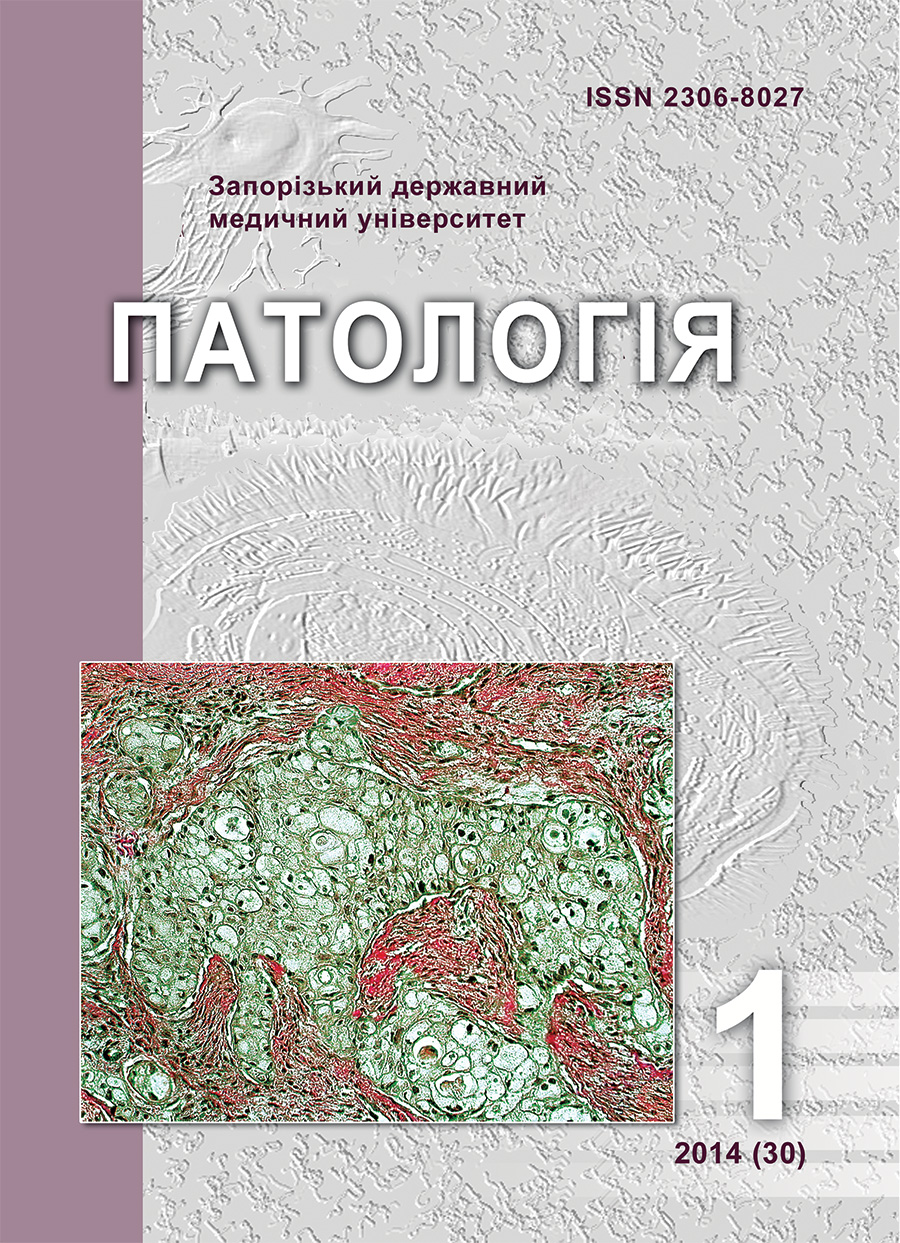Comparative evaluation of the impact of candesartan and ramipril therapy on the levels of GDF 15 and NTproBNP, structural and functional performance of the heart in patients with coronary artery disease with asymptomatic diastolic dysfunction after myocar
DOI:
https://doi.org/10.14739/2310-1237.2014.1.25956Keywords:
diastole, candesartan, ramipril, myocardial infarction, hypertensionAbstract
Aims. Diastolic dysfunction of the left ventricle in patients with coronary artery disease affects the prognosis and is associated with the frequency of hospitalization for first arisen heart failure.
Methods and results. In order to assess the relative impact of candesartan and ramipril initially and after 12 weeks of therapy in 31 patients with coronary artery disease with asymptomatic diastolic dysfunction (ejection fraction>45%), after myocardial infarction with concomitant arterial hypertension, structural and functional changes of the heart were studied using echocardiography and levels of GDF 15 and NTproBNP were studied using ELISA. We found that taking candesartan and ramipril contributed to improving diastolic function with decreasing index of left atrial volume and the ratio E/E ' and an increase in E'.
Conclusion. Appointment of candesartan and ramipril led to the significant reduction in GDF 15. This indicates the comparable positive effect of these drugs on the level of GDF 15 and structural and functional performance of the heart.
References
Bunova, S. S., Usacheva, E. V., & Nelidova, A. V. (2012) Klinicheskaya kharakteristika disfunkcii miokarda levogo zheludochka u pacientov, perenesshikh krupnoochagovyj infarkt miokarda [Clinical characteristics of myocardial dysfunction of the left ventricle in patients after myocardial infarction macrofocal]. Serdechnaya nedostatochnost`, 6, 145–147.
Drapkina, O. M. (2012) Diastolicheskaya serdechnaya nedostatochnost’: mekhanizmy razvitiya i perspektivy vozdejstviya na nikh [Diastolic heart failure: mechanisms of development and prospects of exposure]. Serdechnaya nedostatochnost`, 5(73), 71–78.
Kopica, N. P., Belaya, N. V., & Titarenko, N. V. (2008) Metody diagnostiki miokardial’nogo fi broza u bol’nykh arterial’noj gipertenziej [Methods of diagnosis of myocardial fi brosis in hypertensive patients]. Arterial`naya gipertenziya, 2, 12–15.
Svishhcenko, E. P., & Matova, E. A. (2009) Diastolicheskaya serdechnaya nedostatochnost’ [Diastolic heart failure]. Serdechnaya nedostatochnost`, 1, 47–54.
Sidorenko, B. A., Preobrazhenskij, D. V., Soplevenko, A. V. (2004) Kandesartan – novyj blokator AT-angiotenzinovykh receptorov: osobennosti farmakologii i opyt ispol’zovaniya pri arterial’noj gipertenzii [Candesartan – new blocker AT1 angiotensin receptor: pharmacology and experience especially use in hypertension]. Kardiologiya, 44(1), 55–63.
Tereshhenko, S. N., Zhyrov, I. V. (2006) Mesto antagonistov receptorov angiotenzina II v lechenii khronicheskoj serdechnoj nedostatochnosti. Itogi programmy CHARM [Place of angiotensin II receptor antagonists in the treatment of chronic heart failure. Results of the program CHARM]. Serdechnaya nedostatochnost`, 7(3), 146–149.
Jiamsripong, P., Honda, T., Reuss, C. S., Hurst, R. T., Chaliki, H. P., & Grill, D. E. (2008) Three methods for evaluation of left atrial volume. Eur. J. of Echocardiography, 9, 351–355.
Kristen, A. V., Perez, J. B., Schonland, S. O., Hansen, A., Hegenbart, U., Sack, F., et al. (2007). Rapid progression of left ventricular wall thickness predicts mortality in cardiac light chain amyloidosis. The Journal of Heart and Lung Transplantation, 26(12), 1313–1319.
McMurray, J. J., Adamopoulos, S., Anker, S. D., et al. (2012) ESC Guidelines for the Diagnosis and Treatment of Acute and Chronic Heart Failure 2012: The Task Force for the Diagnosis and Treatment of Acute and Chronic Heart Failure 2012 of the European Society of Cardiology. European Heart Journal, 33, 1787–1847. doi: 10.1093/eurheartj/ehs104.
Nagueh, S. F., Appleton, C. P., Gillebert, T. C. (2009) Recommendations for the Evaluation of Left Ventricular Diastolic Function by Echocardiography. Journal of the American Society of Echocardiography, 22, 107–133. 11. Nishimura, R. A., Jaber, W. (2007) Understanding «diastolic heart failure»: the tip of the iceberg. J. Am. Coll. Cardiol, 49(6), 695–697.
Ren, X., Ristow, B., Na, B., Ali, S., Schiller, N. B., Whooley, M. A., & Ren, X. (2007) Prevalence and prognosis of asymptomatic left ventricular diastolic dysfunction in ambulatory patients with coronary heart disease. The American Journal of Cardiology, 99(12), 1643–1647.
Stahrenberg, R., Edelmann, F., & Mende, M. (2010) The novel biomarker growth differentiation factor 15 in heart failure with normal ejection fraction. European Journal of Heart Failure, 12(12), 1309–1316.
Yip, G. W. K, Wang, M., & Wang, T. (2008) The Hong Kong diastolic heart failure study: a randomised controlled trial of diuretics, irbesartan and ramipril on quality of life, exercise capacity, left ventricular global and regional function in heart failure with a normal ejection fraction. Heart, 94(5), 573–580. doi:10.1136/hrt.2007.117978.
Downloads
How to Cite
Issue
Section
License
Authors who publish with this journal agree to the following terms:
Authors retain copyright and grant the journal right of first publication with the work simultaneously licensed under a Creative Commons Attribution License that allows others to share the work with an acknowledgement of the work's authorship and initial publication in this journal.

Authors are able to enter into separate, additional contractual arrangements for the non-exclusive distribution of the journal's published version of the work (e.g., post it to an institutional repository or publish it in a book), with an acknowledgement of its initial publication in this journal.
Authors are permitted and encouraged to post their work online (e.g., in institutional repositories or on their website) prior to and during the submission process, as it can lead to productive exchanges, as well as earlier and greater citation of published work (SeeThe Effect of Open Access).

